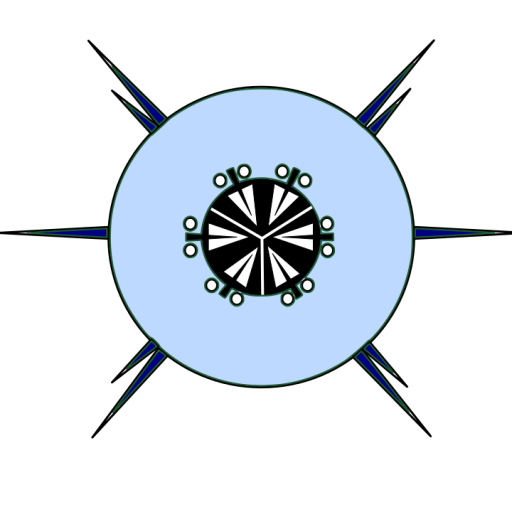Introduction
Marine tardigrades are poorly known in Chile, a review in 2008 (Lee et al. 2008) reported that there were no marine tardigrade species recorded for Chile, and to my knowledge that has not changed in the 10 years since that review was published. However, marine tardigrades are present in Chile, I have seen a wide diversity of species in my samples and in some samples they can be very abundant (100’s per 50 ml of sediment). In order to address this lack of knowledge I have started to investigate the tardigrades here in Chile, with the help of Dr. Nigel Marley at the University of Plymouth. As a starting point I have reviewed the diversity and distributions of the tardigrades species that are in the samples that I have analysed over the last 10 years, starting with those collected during the macroecology project, which includes samples from Arica in the north down to Puerto Williams in the south. I have also included samples from Easter Island, and the long-term time-series that I have started at three sites in the Seno Reloncaví here in Puerto Montt. I presented this initial assessment at the 14th International Symposium on Tardigrada which was held in Copenhagen, Denmark during July 2018.
The analysis of the quantitative samples indicated the presence of 11 tardigrade genera: Angursa (Coihuin), Archechiniscus (Chigualoco), Batillipes (9 sites: Desembocadora del Río Loa, Caleta Totoral, Coihuin, Puerto Espora, San Gregorio, Puerto Percy, Punta Arenas), Chrysoarctus (4 sites: Punta Paquica, Tal Tal, Los Molles), Dipodarctus (Easter Island), Echiniscoides (Desembocadora del Río Loa), Mesostygarctus (Punta Paquica), Orzeliscus (3 sites: Easter Island, Los Molles, Coihuin), Ramajendas (Ultima Esperanza), Stygarctus (3 sites: Caleta Lenguado, Curanipe, Coihuin) and Tanarctus (Coihuin). Of the 109 sites sampled, tardigrades were present at 25 of them. The most widely distributed genera was Batillipes which was found at various sites in both the north and south of Chile, on both exposed and protected shores, hopefully this indicates that there is more than one species. Qualitative samples collected at the sites also indicate that the surface quantitative sampling has not captured the true extent of tardigrade diversity and distributions. For example, qualitative samples taken at 50 cm deep in the sediments at Punta Choros revealed the abundant presence of Stygarctus, but quantitative samples taken from the sediment surface of this beach did not contain a single tardigrade. In addition, temporal variability in population sizes my also mask tardigrade diversity. For example monthly sampling at Coihuin in southern Chile has revealed considerable temporal variation in the population of Batillipes, in March 2014 average abundance was 1.9 individuals per 50 ml of sediment whereas in September 2014 average abundance was 347.4 individuals per 50 ml of sediment. Thus samples taken in September would have been more likely to capture the presence of tardigrades than samples taken in March. Though the Echiniscoides species, which I believe to be Echiniscoides sigismundi mediterranicus based on the claw counts, was found in only one quantitative sediment sample, I know from personal observation that Echiniscoides is common and abundant on the high-shore barnacles found the length of the Chilean coast.
Morphology
The most recent comprehensive review of marine heterotardigrades, which includes a dichotomous key, was published recently by Fontoura et al. (2017). There are marine eutardigrades but they are less frequent and are typically to be found in brackish water and intertidal environments. Thought there are specific anatomical features which distinguish the heterotardigrades from the eutardigrades, in general the heterotardigrades have a more diverse and developed body “morphology” with the presence of well developed cephalic, trunk and leg appendages, and in many species cuticular extensions in the form of fringes, spines, and lobes. In addition to these appendages and extensions the most useful characters for identifying heterotardigrades are the structure of the foot and claws which take on a wide variety of forms from the multitude of claws found on Echiniscoides to the rounded toes of Batillipes and long pads of Orzeliscus.
Reproduction
Feeding
Habitat
Spatial Variation
Temporal Variation
Taxonomy
Chilean Species List
The species in this section should, for the moment at least, be regarded as provisional identifications. Once the identifications that I have made have been confirmed by a taxonomic expert I will change this statement.
Arthrotardigrada
Coronarctidae
Neoarctidae
Renaudarctidae
Echiniscoidea
References
Fontoura, P., Bartels, P.J., Jørgensen, A., Kristensen, R.M. & Hansen, J.G. (2017) A dichotomous key to the genera of the Marine Heterotardigrades (Tardigrada). Zootaxa 4294:1-45.[doi.org/10.11646/zootaxa.4294.1.1]
Lee, M.R., Clarke, M., Fernandez, M.E., Gonzalez, C., Rozbaczylo, N., Valdovinos, C., Hermosilla, C., Prado, L. and Castilla, J.C. (2008) Diversity of free-living benthic marine invertebrates in Chile. Revista Chilena Historia Natural 81: 51-67.
